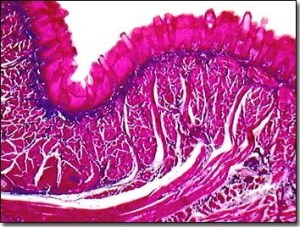
By tracking individual cells in genetically modified salamanders, researchers have found an unexpected explanation for their seemingly magical ability to regrow lost limbs.
Rather than having their cellular clocks fully reset and reverting to an embryonic state, cells in the salamanders’ stumps became slightly less mature versions of the cells they’d been before. The findings could inspire research into human tissue regeneration.
“The cells don’t have to step as far back as we thought they had to, in order to regenerate a complicated thing like a limb,” said study co-author Elly Tanaka, a Max Planck Institute cell biologist. “There’s a higher chance that human or mammalian cells can be induced into doing the same thing.”
Thinkers from Aristotle to Voltaire and Charles Darwin have been fascinated by salamander regeneration, though they barely understood it. (Aristotle even confused salamanders with snakes, attributing to the latter the power of growing new eyes.) But only in the last few decades have scientists been able to study the phenomenon at high resolution.
They found that salamander regeneration begins when a clump of cells called a blastema forms at the tip of a lost limb. From the blastema come skin, muscle, bone, blood vessels and neurons, ultimately growing into a limb virtually identical to the old one.
Researchers, many of whom hoped their findings could someday be used to heal people, hypothesized that as cells joined blastemas, they “de-differentiated” and became pluripotent: able to become any type of tissue. Embryonic stem cells are also pluripotent, as are cells that have been genetically reprogrammed through a process called induced pluripotency.
Such cells have raised hopes of replacing lost or diseased tissue. They’re also difficult to control and prone to turning cancerous. These problems may well be the inevitable growing pains of early-stage research, but could also represent more fundamental limits in cellular plasticity. If Tanaka’s right that blastema cells don’t become pluripotent, then the findings raise another possibility — not just for salamanders, but for people. Rather than pushing cellular limits, perhaps researchers could work within nature’s parameters.
“People working on stem cells are trying to de-differentiate cells in an artificial fashion,” said Alejandro Sánchez Alvarado, a Howard Hughes Medical Institute stem cell biologist who was not involved in the study. “It will be very important for the regenerative-medicine community to take stock of what’s going on in the salamander, because they’ve been doing it for 360 million years, and found a natural way to de-differentiate their tissues.”
Having first added a gene that makes a fluorescent protein into the genomes of axolotl salamanders, Tanaka’s team removed from their eggs the cells that would eventually become legs. They fused the cells into new eggs; when these matured into adult salamanders, cells in their legs glowed under a microscope.
After the researchers amputated their salamanders’ legs, the legs regrew! Cells in the new legs also contained the fluorescent protein and glowed under a microscope, so the scientists could watch blastemas form and legs regrow in cell-by-cell detail.
Contrary to expectation, skin cells that joined the blastema later divided into skin cells. Muscle became muscle. Cartilage became cartilage. Only cells from just beneath the skin could become more than one cell type.
“People didn’t know if the salamanders were special because they forced adult tissues to become pluripotent, and whether we should look for factors that did that — or if, as we find now, we actually shouldn’t try to force cells back to a pluripotent state,” said Tanaka.
Whether this striking absence of pluripotency is universal is still unknown. The experiment needs to be replicated independently in other salamander species.
Experiments underlying the pluripotency hypothesis “have been reproduced by multiple labs,” said Sánchez Alvarado. “There’s definitely something to them. But the results from Elly’s lab seem solid. There’s clearly a paradox here.”
According to Sánchez Alvarado, those earlier experiments labeled cells with dyes that may have bled into other cells, creating the illusion of pluripotency. It’s also possible that the axolotl’s mechanisms are different from other salamanders.
If Tanaka’s findings hold, they suggest a relatively new avenue for stem cell research. Bodies might find it easier to accept cells that have been only partially reprogrammed, like those in the axolotl’s blastema, than embryonic or fully reprogrammed cells.
“The salamanders are dialing the timeline back a few steps,” he said. “They don’t go all the way back and ask a cell to catch up,” said Sánchez Alvarado.
This approach has shown promise in the lab of Harvard Stem Cell Institute co-director Douglas Melton, who last year used partial reprogramming on pancreas cells that subsequently formed other pancreas cell types.
“This represents a parallel approach for how to make cells in regenerative medicine,” said Melton at the time. “If you’ve got extra cells of one type and need another, why go all the way back to a stem cell?”
Tanaka next hopes to decipher the genetic instructions governing blastema formation. But however the pluripotency–versus–partial-reprogramming debate turns out, her team’s development of a genetically modified axolotl as a model organism for regenerative research is significant.
Read more about the study and human tissue regeneration
Maria Konovalenko
SCIENCE FOR LIFE EXTENSION FOUNDATION
http:/mariakonovalenko.wordpress.com/
maria.konovalenko@gmail.com








